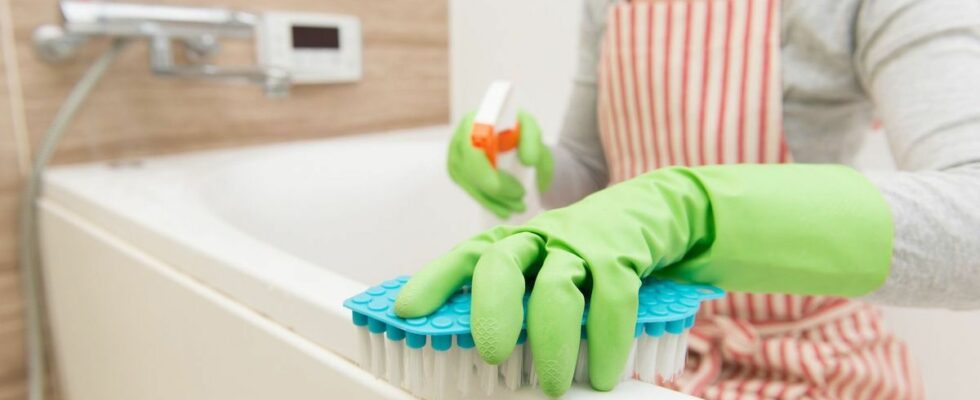Published on
updated on
Reading 3 min.
in collaboration with
Dr Gérald Kierzek (Medical Director of Doctissimo)
Medical validation:
October 17, 2024
In the bathroom, certain everyday objects are particularly exposed to viruses. Here are two of them you should be wary of.
To better understand how the viruses that populate our bathrooms work, scientists from Northwestern University (United States) had the idea of taking samples from everyday objects. Result ? Two of them have incredibly high numbers of viruses, particularly bacteriophages, or phages, known to only infect bacteria.
Microbes that proliferate… in water
Although we know that viruses are common in our homes – and that they attack bacteria rather than humans – they nevertheless remain worrying. It is with this in mind that a team of researchers decided to carry out the investigation.
“This project started as a curiosity. We wanted to know what microbes live in our homes. If we think about indoor environments, surfaces like tables and walls are really difficult for microbes to tolerate. Microbes prefer environments with water. And where is there water? In our shower heads and on our toothbrushes“, confides Erica M. Hartmann, main author of the study in a press release from NorthWestern University.
Concretely, scientists collected samples from 92 shower heads and 36 toothbrushes in the bathrooms of residents in the United States.
Result ? Their analysis of the samples, based on DNA sequencing, revealed the presence of more than 600 viruses known to infect bacteria, “bacteriophages”. Of these, 314 were only detected in one sample and none of the samples were found to be entirely identical.
“The number of viruses we have discovered is absolutely incredible“, revealed Erica M. Hartmann. “We have discovered many viruses that we know very little about and many more that we have never seen before. It’s amazing how much untapped biodiversity is all around us. And you don’t even have to go far to find it, it’s right under our noses.”.
Very distinct bacterial islands
Another interesting observation drawn up by the study: if the shower head contains bacteria frequently found on the ground and in drinking water, the toothbrush is contaminated by species associated with the human microbiome.
“We found virtually no overlap between the types of viruses found on shower heads and toothbrushes. We also found very little overlap between two samples. Each shower head and each toothbrush is like a little island of its own. This just highlights the incredible diversity of viruses that exist“, underlines the researcher.
What are the breeding grounds for microbes to avoid?
Faced with these results, Dr. Gérald Kierzek, medical director of Doctissimo, wants to be reassuring: these microorganisms play an essential role in the development of our immune system and can even act as a means of defense.
“Too much hygiene kills hygiene. However, we cannot live in a sanitized world. This contributes to the production of our immune defenses. he says.
Nevertheless, certain objects are, it is true, “of the germ nests“, adds the doctor. It is:
- Towels: “moist and often used to clean private parts, they are an ideal breeding ground for fecal bacteria and can promote the transmission of gastroenteritis or respiratory infections.
- From the shower head : “We can find potentially dangerous bacteria there such as Mycobacterium avium, responsible for certain pulmonary infections.” ;
- Razors: “Beware of the risk of skin infections such as Staphylococcus aureus”;
- From the washcloth or the shower flower: “Beware of the fungi and bacteria that take shelter there”;
- From the toothbrush: “Same thing here, that’s why it has to be changed very regularly”;
- From the shower curtain: “It is conducive to the development of mold”
Advice from Dr Gérald Kierzek to limit their spread: “Dry these objects thoroughly after use, wash or replace them regularly and finally ventilate or ventilate the bathroom”, he concludes.

